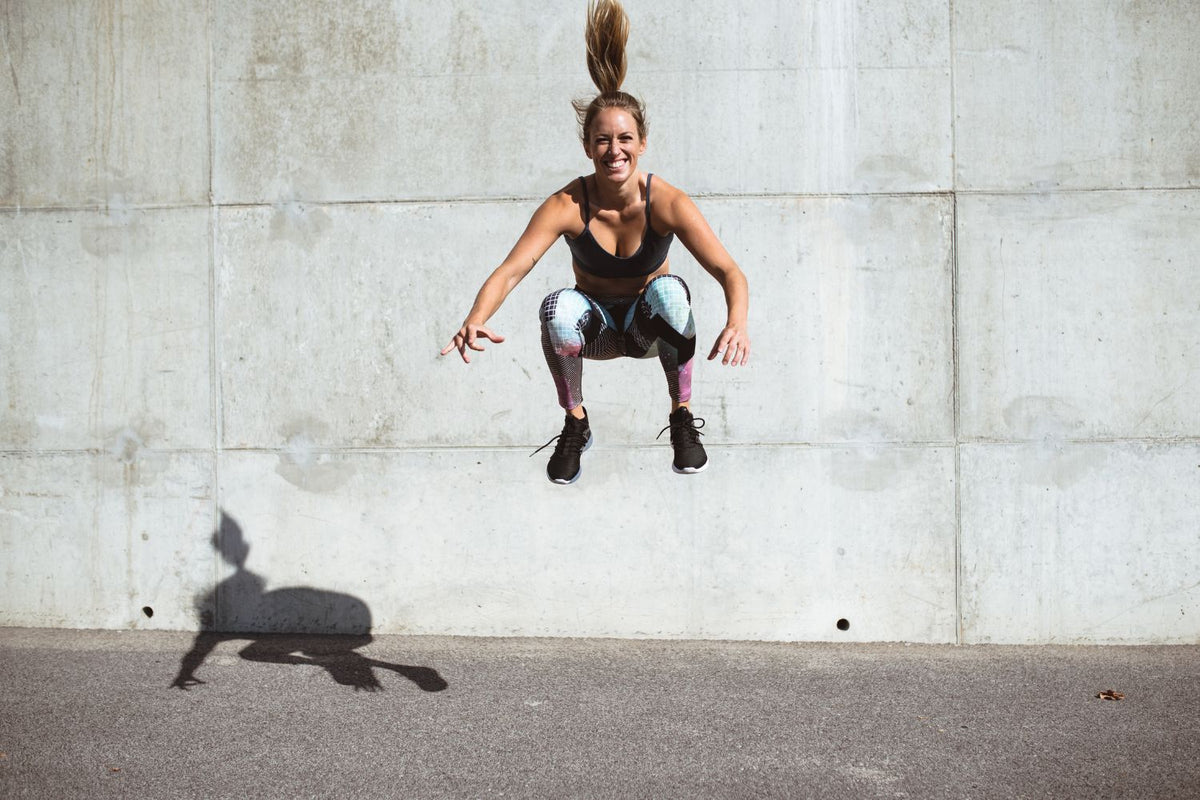Jump Squats: Strengthen the Glutes and Legs

Jump squats are a fantastic workout for the lower body. They build explosive power and strengthen the muscles supporting the hips and knees. Here's how to do jump squats to help you get the most out of the exercise and avoid injury.
How to do jump squats
- Stand up straight with your feet shoulder-width apart and knees slightly bent. You should wear sports shoes with a bit of squish and spring or exercise on a soft surface like a carpet to absorb some of the shock.
- Bend at the knees and hinge forward at the hip to get into a squat.
- Activate your core and propel yourself off the floor using the power in your quads, glutes, calves, and hamstrings. With the legs fully extended, the feet will be a few inches off the floor. You can swing your arms over your head or down to your sides as you jump.
- Land as softly as you can. Land first on the balls of your feet, then distribute the shock through the arches and the heel.
- Right after landing, coil back into a squat and jump again.
Depending on your fitness goals, you can do more reps and sets for endurance, higher jumps in fewer reps and sets for explosive strength, or quicker jumps for cardio and overall conditioning.
Tips for safer jumps
- DO NOT add weights to a jump squat. Extra weight can stress out the ankles and knees. Not to mention, the movement is already a very effective workout for the lower body.
- Make sure to warm up first. 5-10 minutes of jogging on the spot, jumping jacks, or high knees will prepare your muscles for the more intense workout ahead.
- If you’ve had a knee injury, surgery, or pre-existing issues (such as instability), talk to your physio or GP before adding jump squats into your workout routine.
- Jump squats (the same as most plyometric exercises) need a sufficient rest period between sessions. You should only do this exercise AT MOST once every 48 hours.
- If the exercise causes pain or discomfort, you may need to start with just a handful of reps or build more strength in the legs and glutes before jump squatting. You might also need to check in with a physio to see if there are any movement, tracking, or stability issues around your knees, hips, or ankles.
Benefits of jump squats
Jump squats work the glutes, hamstrings, quadriceps, and lower back. They increase your explosive strength and build the muscles supporting the hip and knee, reducing your risk of injury and pain in those areas.
The exercise is perfect if you play high-intensity or team sports like tennis, basketball, volleyball, and soccer - all requiring high jumps and/or fast sprints.
Support your squat
When doing an intense exercise your joints aren’t quite used to, or when exercising after injury recovery, it’s a good idea to give your joints extra protection. The GenuTrain P3 Knee Brace incorporates compression, strapping, and padding, which:
- Maximises muscle output
- Reduces fatigue
- Stabilises the patella
- Relieves pain
More information
If you require assistance selecting the right product for your needs or wearing the brace, call us on 1300 668 466 or contact us via live chat.
Do you have private health? Most private health extras will cover Bauerfeind Products. Check to see if yours is included. Bauerfeind Private Health Insurance Inquiry.
Bauerfeind was founded in 1929, and since then, we've worked tirelessly to develop and improve our extensive range of braces, insoles, and compression products. Our mission is to provide you with top-of-the-line supports so you can reach your fitness goals or live life without pain holding you back.
Every product is produced entirely in our facilities in Germany with the guidance of doctors, clinics, and orthopaedic technicians.
This information is provided for general information purposes and should not be relied on as a substitute for medical advice, evaluation or care from a qualified and licensed healthcare provider. The information contained here should not be considered a plan of care or physical therapy.




